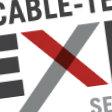Industry organizations are defining the requirements for carrier-grade WiFi, which will make managing WiFi networks more like managing cellular ones.

DENVER -- WiFi networks take a lot of abuse now that everyone expects to be connected 24/7, and WiFi management techniques haven't kept up with consumer performance demands. Luckily, several industry associations are working together to improve the situation.According to CableLabs Lead Wireless Architect Mark Poletti, speaking at SCTE Cable-Tec Expo here, the Institute of Electrical and Electronics Engineers Inc. (IEEE) , Wi-Fi Alliance and Wireless Broadband Alliance are all collaborating on standards for carrier-grade WiFi tools that will enable WiFi to be managed more like a cellular network.The bad news? The industry won't be ready to start certifying products with WiFi technology as carrier-grade until 2015 or 2016. And that means official deployments are even further out.Carrier-grade WiFi has the potential to improve wireless performance with baseline requirements for features like traffic prioritization and WiFi roaming. It will be ideal for environments where numerous access points are deployed and numerous devices are trying to connect to the local network.In other words, carrier-grade WiFi is made for situations like community WiFi implementations and public hotspot deployments where users are offloading traffic from mobile networks to avoid data fees. That's good news because CableLabs has predicted that the number of hotspot deployments will increase from 5.2 million in 2012 to 10.5 million by 2018.Want to know more about cable WiFi? Check out our dedicated cable WiFi content channel here on Light Reading.Among the issues carrier-grade WiFi will address are WiFi Multimedia Quality of Service (WMM-QoS) and WiFi Multimedia Admission Control (WMM-AC). The first defines traffic prioritization procedures for applications that have a low tolerance for latency, jitter and packet loss. The second defines a mechanism for determining when an access point is overloaded and then rejecting new client requests to preserve performance levels.Related on the performance front, carrier-grade WiFi experts are also working to set requirements for RF power transmission, and for techniques that enable intelligent frequency band selection based on traffic congestion levels. Self-organizing network (SON) practices are also being defined as part of the carrier-grade WiFi effort for managing large-scale WiFi deployments with multiple access points.Finally, Hotspot 2.0 is now considered part of the carrier-grade WiFi initiative. Hotspot 2.0, also known as Passpoint, allows for client devices to automatically discover and connect to a wide set of WiFi hotspots based on established roaming agreements. Related to Hotspot 2.0, industry experts are also now working on enabling faster secure re-authentication across access points as users move from one hotspot to another. (See WBA: 12 Carriers Deploying Hotspot 2.0 and TWC & Charter Embrace Next-Gen WiFi.)Carrier-grade WiFi promises significant improvements to wireless hotspot performance... if consumers and operators can only wait a couple more years.— Mari Silbey, special to Light Reading
About the Author(s)
You May Also Like











